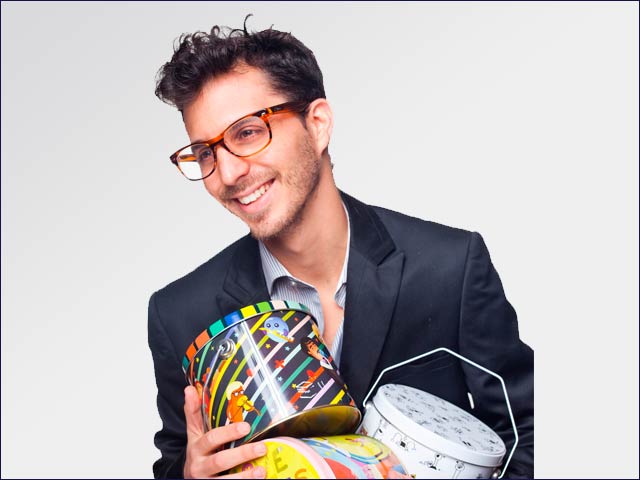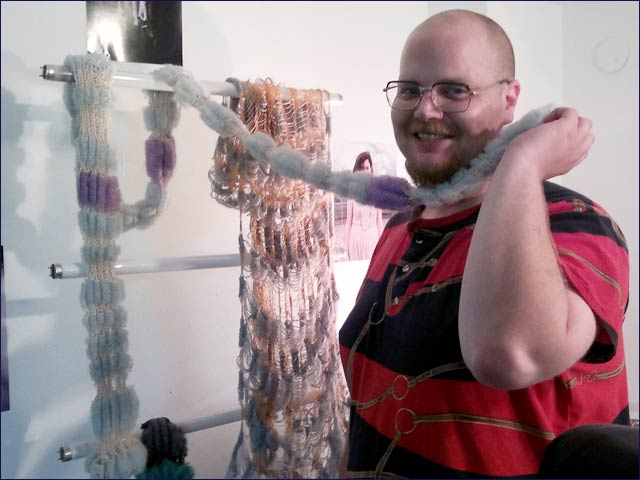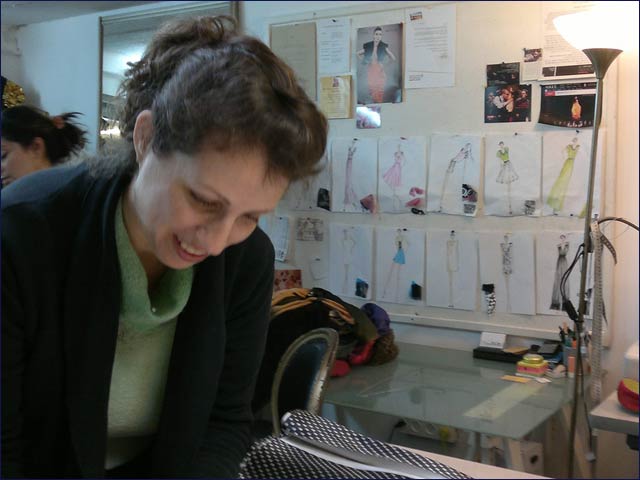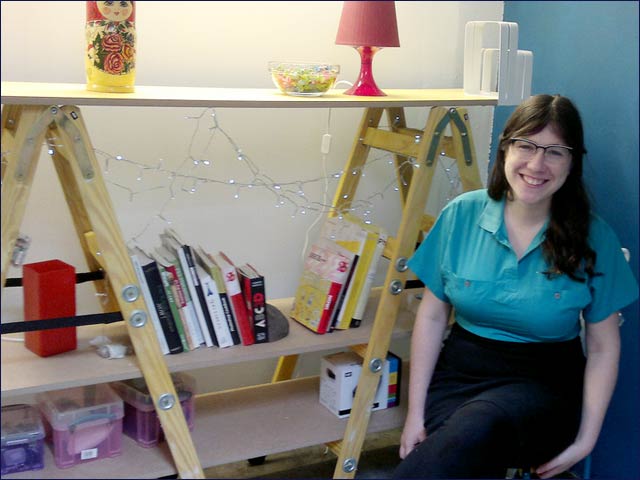By Avigayil Kadesh
Eleven up-and-coming design professionals have set up shop in a unique Israeli social entrepreneurship project: The artisans receive common studio and retail space at low cost, plus an experienced mentor, in exchange for teaching Israeli high school students practical career tools in their field.
Design Terminal opened in January in Bat Yam, a working-class suburb of Tel Aviv. It’s the latest out-of-the-box scheme cooked up by the Israeli non-profit organization Latzet Mehakufsa (Out of the Box), which promotes young Israeli designers while sponsoring a variety of social and educational enterprises in the arts.
Design Terminal is the most ambitious and community-embedded project yet, according to Liron Hershkovitz, who founded Out of the Box in August 2010 while studying design at the Tel Aviv-Jaffa Academic College.

Out of the Box founder Liron Hershkovitz
Based in a huge renovated warehouse donated by Israeli clothing chain Castro, Design Terminal is a win-win for the designers, the city and the 120 students who will get free lessons.
Low rent, high potential
She’d worked with Hershkovitz to develop a design entrepreneurship workshop for budding Israeli designers ages 20 to 35. The program is now in its fourth year, and Lulae continues to volunteer with the non-profit while growing her handmade baby and children’s clothing and accessories business.
Children’s designer Sarit Lulae
“I was looking for a studio, and Liron said, ‘Listen, we’re doing this program and you should come and see if it works for you and if you can get in.’ They interviewed all the applicants to see what level our business is at and what our plans are,” she says, surrounded by the items she sells through 60 stores across Israel under the brand name Nuki’le.
Lulae will be volunteering in a school six hours per week, teaching PhotoShop and graphic design. “I get this space for 1,000 shekels (about USD 270) a month -- that includes property tax, electricity, water, everything. I can use it as a commercial store and a studio, and I can use the common space too.”
The large space will periodically host exhibitions, open studio days -- when the public can speak with the designers as they work -- as well as family activities and concerts, says Hershkovitz. Proceeds from items sold during community events will go back to the program.
‘Exactly what I needed’
Architect Itai Palti, who moved to Israel three years ago from London, had been working at a Tel Aviv firm and was ready to branch out on his own.
“I heard about the project and met with Liron, and my first reaction was, ‘Bat Yam? I don’t think so.’ But I realized it’s exactly what I need to help me get introduced to the local industry,” Palti says. “When they called me to say I’d won a spot, I was really happy. We have good designers here from all the fields, and I’m interested in collaborating with them.”
One of those collaborations could be with Ziv Ben Gal, a textile and accessories designer who consults on the use of silk and other luxury fabrics for Ayala Sarfaty’s international Tel Aviv-based lighting firm Aquacreations. Palti envisions using Ben Gal’s cutting-edge textiles as partitions inside buildings.
Ben Gal shows off his new collection of lightweight knitted jewelry, “something quite new and fun and affordable,” he says.

Textile designer Ziv Ben Gal “My passion is knitting, and I try to work with very good materials such as silk, mohair and linen. I studied in the design academy in Eindhoven in Holland for six years. I came back to Israel half a year ago and heard about this place, so I applied and I’m really happy to be here. It’s unique to be with designers from different fields. I’m also planning to teach knitting to children in addition to teaching PhotoShop.”
‘Home with a lot of neighbors’
Michal Motil, who creates theatrical and couture clothing, heard about Design Terminal from a fellow teacher at the design school Studio 6B in Tel Aviv. She is an active community volunteer, so the project sounded like a perfect fit.

Costume designer Michal Motil“I said immediately, ‘I want to be there.’ I love working in a space with other people who can share ideas with me,” Motil says. “I used to work from home. Now it’s home with a lot of neighbors.”
Brand, motion and web designer Avital Tseitlin met Hershkovitz through the Out of the Box entrepreneurship course. She got two fellow graduates of Bezalel Academy of Art and Design, in Jerusalem, to apply to share a Design Terminal space with her.

Avital Tseitlin does brand, motion and Web design
She will be volunteering with 11th- and 12th-graders on a non-academic track. “Usually they’d be car mechanics, but now they can be designers,” says Tseitlin. “I found out when I was in high school that you can actually make a profession out of this.”
Says Palti: “It takes a very forward-thinking city council to give this project its full backing. The Design Terminal will help rebrand Bat Yam as a place for designers.”